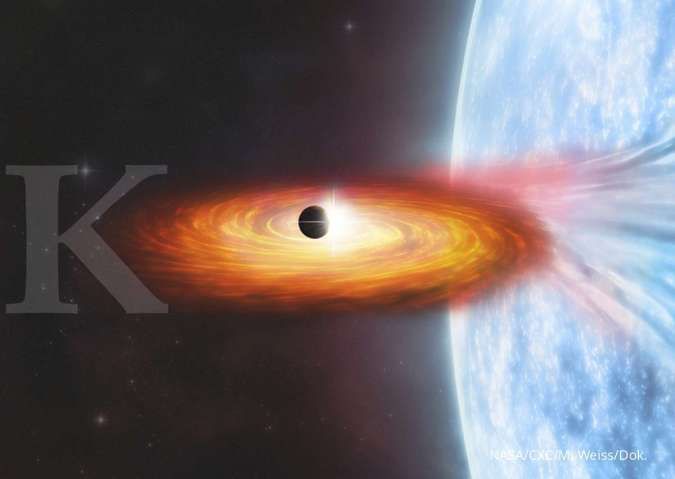ILLUSTRATION. NASA finds evidence of a planet in the Milky Way galaxy, thought to be the size of Saturn
Writer: Arif Budianto
KONTAN.CO.ID – NASA has found evidence that a planet outside the Milky Way galaxy has been detected for the first time. Using NASA’s Chandra X-Ray Observatory telescope, these findings open a new window for discovering expolanet at a greater distance than before.
NASA recently (26/10/2021) revealed its latest findings about planets outside the Milky Way galaxy that were caught by the Chandra Observatory telescope. Quoting from the official site NASA, candidate exoplanet or this extrasolar planet may be located in the spiral galaxy Messier 51 (M51) which is also known as the Whirlpool galaxy because of its distinctive appearance.
The candidate planet is known as M51-ULS-1, which is located at M51.
To date, it is known that NASA has found all known exoplanets and candidate exoplanets in the Milky Way galaxy. Nearly all of them are less than about 3,000 light years from Earth.
However, in contrast to his new findings, an exoplanet in M51 is about 28 million light-years away or thousands of times farther away than the one in the Milky Way.
“We’re trying to open up new areas to discover other worlds by looking for candidate planets with X-ray wavelengths, a strategy that allows for finding other galaxies,” said Rosanne Di Stefano, a representative from the Center for Astrophysics | Harvard & Smithsonian (CfA) in Cambridge, Massachusetts, led the research published today in Nature Astronomy.
Quote from Space, the research team viewed objects on M-51 using transits, which occur when an object transits, or passes in front of a star. While doing this method, something blocks some of the starlight and creates a brief dimming.
Previously, scientists had used this method to find thousands of exoplanets, but still in the Milky Way galaxy. In total, they saw 55 different systems in M-51, the Whirpool galaxy, 64 systems in Messier 101 (M-101) or the “windmill galaxy”, and 119 systems in Messier 104 or the “Sombrero galaxy.”
To find the planet, the team led by Di Stefano used the Chandra telescope to look for a decrease in the brightness of the X-rays. Because X-rays are generated by a small area of the star, planets passing in front of the stars can actually block X-ray emission completely.
Also Read: Several asteroids will pass by Earth, one of them is bigger than the Pyramid
Instead of resulting in a subtle dimming of optical light, the researchers were able to see a clearer transit. This makes it easier to see objects that are farther away.
His findings suggest possible exoplanets in the Whirlpool galaxy in a binary system orbiting two large objects, namely a neutron star or a black hole orbiting a large companion star.
Speaking of this newest planet, the transit that astronomers witnessed lasted about three hours and X-ray emissions dropped to zero. From these results can help astronomers to know that the object that is a candidate planet is likely the size of the planet Saturn.
This candidate planet is known to orbit in a neutron or black hole at a distance of twice the distance of Saturn to the sun.
The discovery of planets outside the Milky Way galaxy opens the potential for a new era of planetary detection and study in the future. But at this time, these observations do not confirm that the object viewed using Chandra in this study is a planet.
To make sure that what he saw was really a planet, astronomers needed an even longer study of about 70 years. They need more data to confirm this claim, the astronomers said.
It is known that there are other possible factors that the object affecting the dimming could be caused by a cloud passing in front of the star.
In your opinion, do the findings of planet candidates outside the Milky Way open up the possibility of signs of life on these planets?
Or the object that makes the dim light is not a planet, but another object that happened to pass by and obstruct the star caught by NASA’s Chandra telescope.


